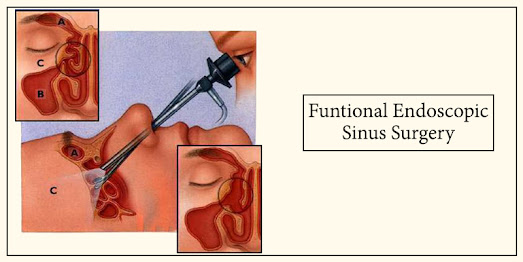ENDOSCOPIC SINUS SURGERY
Description
Endoscopic sinus surgery is performed in order to treat the
obstructed or infected sinus. This includes maxillary sinus which is located in
the cheekbone, frontal sinus which is located in the forehead, ethmoid sinus
(on the nasal bridge between the eyes) and sphenoid sinus which is located
behind the nasal cavity.
Sinus surgery is recommended in cases when there is drainage
of any infectious material from the sinuses or removal of any kind of
obstruction that may be causing infection in the sinus.
Condition
Conditions that require endoscopic sinus surgery are: -
1) Sinusitis
2) Septal deviations or turbinate hypertrophy
3) Nasal polyps
Pre Procedure
The patient is instructed to fast 8-10 hours prior to the
surgery.
- Also, the patient is advised to stop smoking. Even the
blood thinning medications are stopped
During Procedure
The surgery is performed under general anesthesia, where the
endoscopic technique is followed.
- In This procedure,
image-guided endoscopy is also used where the endoscope is inserted into the
nasal cavity.
- The diseased tissue is removed and the sinus pathways are
rerouted.
- To create wider space for the sinuses to drain, small
pieces of bone may have to be removed.
Post Procedure
Prescribed medications should be taken as advised.
- Post-Operative care and follow up is much important to
ensure the success of the surgery
Risk Complications
The sinus
Infection may reappear.
- The patient may experience excessive dryness
or crusting of the nose due to nasal discharge.
- However,
damage to the eyes and the skull base is rare.
#sinussurgery #health #sinusitis #sinus
#sinusinfection #allergies #breath #sinusrelief #nasosano #cancer #rhinoplasty
#headandneck #ent #otology #doctor #entdoctor #ear #ricerca #sinusproblems
#asthma #allergy #tumori #noprofit #volontariato #ricercascientifica #hearingloss
#dehgani #covid




Comments
Post a Comment